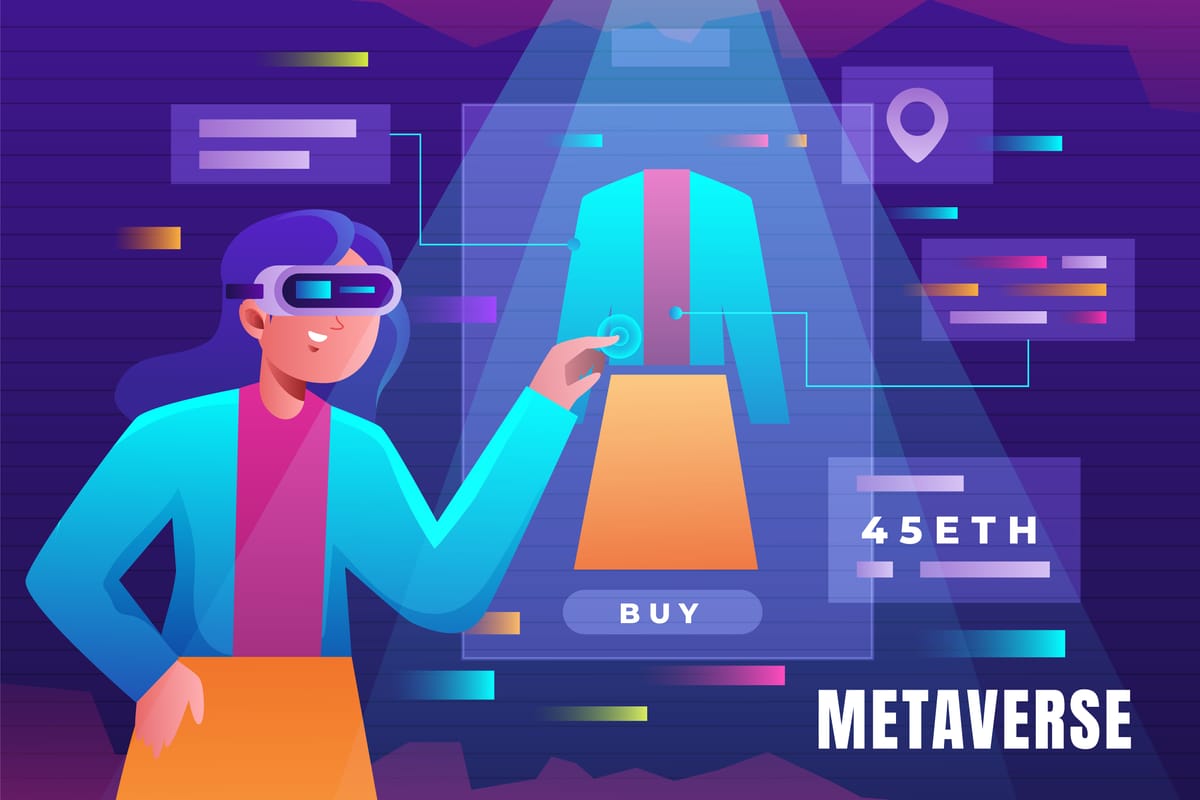Decoding the Metaverse Consumer: Insights for Brands

The metaverse may seem like a far-off futuristic concept, but understanding this convergence of physical and virtual worlds is quickly becoming necessary for leading consumer brands. With projections that metaverse experiences could unlock $800 billion in commerce by 2024, the need for robust consumer insights around this channel is only growing.
So what do we know about the emerging metaverse consumer and what motivates their behaviours? At Rwazi, we deployed distributed data collectors equipped with experience sampling apps and passive digital ethnography tools to study the attitudes and activities of the metaverse, early adopters, across virtual worlds like Decentraland, Sandbox and Roblox.
Our research reveals an audience highly motivated by creativity, expression of digital identities, status signalling, and social connectivity. Unlike gaming's traditionally solo or small multiplayer experiences, the metaverse thrives on community formation and shared world-building.
Profiles of Key Metaverse Consumer Segments
Based on our data, we've identified four primary metaverse user archetypes global brands must understand:
The Creators (23%)
Highly engaged in building immersive 3D experiences, developing A.I. companions, curating digital art galleries and more. Motivated by self-expression. Solid income levels enabling NFT/virtual real estate ownership.
The Socializers (18%)
I am gravitating to the metaverse for interpersonal connections and subculture communities—avid in-experience shoppers of digital cosmetics/skins. Crave exclusivity and customization of online identities.
The Players (43%)
Hardcore gamers drive engagement in virtual sports/esports leagues—status-conscious consumers who broadcast affiliations via luxury digital goods and currency ownership.
The Explorers (16%)
Experience-driven tourists and collectors exploring different metaverse worlds out of curiosity. Lower commitment and tenure, but open to brand activations if immersive.
Importantly, we found the notions of digital self and shared virtual culture resonating as key passion points uniting these disparate audience groups. This means brands entering the metaverse can't simply repurpose decades-old product-led mindsets.
While demographics like age and income brackets provide some contours, we're seeing an ideology shift. Purchasing premium digital goods and real estate isn't just about the items themselves, but signalling an aspirational identity and community membership when in those virtual spaces.
Metaverse Status Economy: By the Numbers
Our metaverse data intelligence tools monitored over 2 million hours of avatar behaviour across top virtual worlds over the past six months. Key digital consumption trends we discovered include:
- $120 million+ of NFT digital goods trading volume per month
- 16.2 million virtual real estate visits monthly
- 32% of Explorers converted to digital clothing/skin purchases
- Creators are 3.3X more likely to invest in NFT artwork/collectables
- Players spent over $17 million on customized avatar skins and emotes
- 25% growth in social token usage for accessing metaverse events and exclusive communities
With avatar idealization emerging as a key metaverse behaviour driver, identity customization and status signalling are principles brands must embrace through virtual goods, NFT collections, token communities, avatar appearances and more.
Acclimating to these new cultural norms and economics around digital ownership is an adjustment. But as physical and virtual realities continue converging, the metaverse consumer has become an audience too vital for brands to ignore."
Metaverse Real Estate: The Crypto-Spatial Gold Rush
Beyond personal avatar flexing, digital real estate speculation has exploded into a promising new frontier for reaching metaverse users at scale.
Major brands from JPMorgan and Barbados to Samsung have spent millions acquiring prime metaverse locations to open virtual outposts and immersive experiences. Total land asset values already exceed $2 billion, with swaths of coveted parcels yet to be distributed or traded as LAND NFTs.
As geographic adjacencies begin mirroring the physics of real-world urban clustering, with retail, commercial and luxury residential zoning all taking shape, brands positioned at key metaverse crossroads will assume an outsized presence within the virtual consumer sphere.
Projecting the Metaverse Opportunity
While still in the formative stages, we have forecasted the metaverse economy to reach an estimated $782 billion in annual consumer expenditure by 2028 if adoption mirrors historical tech diffusion for mobile devices and social media.
However, getting in front of virtual audience segments and staking claims on key consumer mindshare will require brands to become metaverse literate and embrace fundamentally disruptive approaches to digital brand building, including:
- Collaborating with metaverse fashion designers and digital creators to conceptualize innovative virtual products in tune with trends
- Building direct-to-avatar marketing strategies aimed at hooking audience passion points like identity expression
- Recruiting internal metaverse community experts, architects and spatial analytics teams to optimize virtual experiences
- It deeply understands and lives the ethos of digital ownership through branded NFT collections, tokens and customer data perspectives.
- Automating agile, test-and-learn virtual product prototyping powered by real-time avatar analytics and feedback loops
The metaverse remains an iterative long-term play. But by investing in consumer intelligence capabilities that help decode this new cyberspace frontier, brands can secure invaluable early-mover advantages for connecting with the audiences that will inevitably inhabit these immersive digital realms.
As for what specific experiences and activations will resonate, that remains the million-dollar (or crypto) question. However, the answers are rapidly coming into focus through on-the-virtual-ground research from partners like Rwazi.
For metaverse-forward brands ready to start mapping out their virtual universe, reserving your plot of digital land may be the first step.




